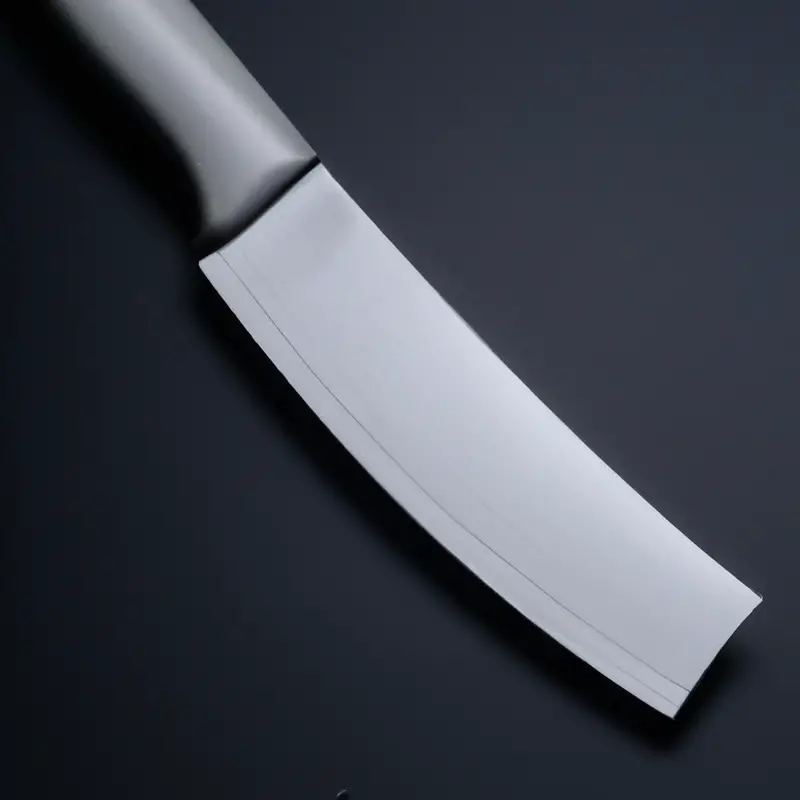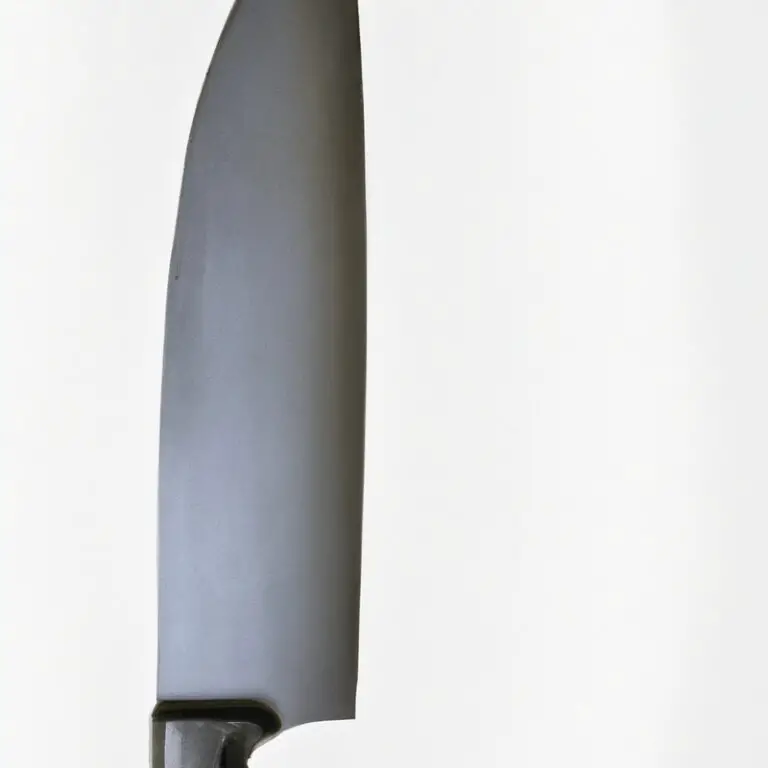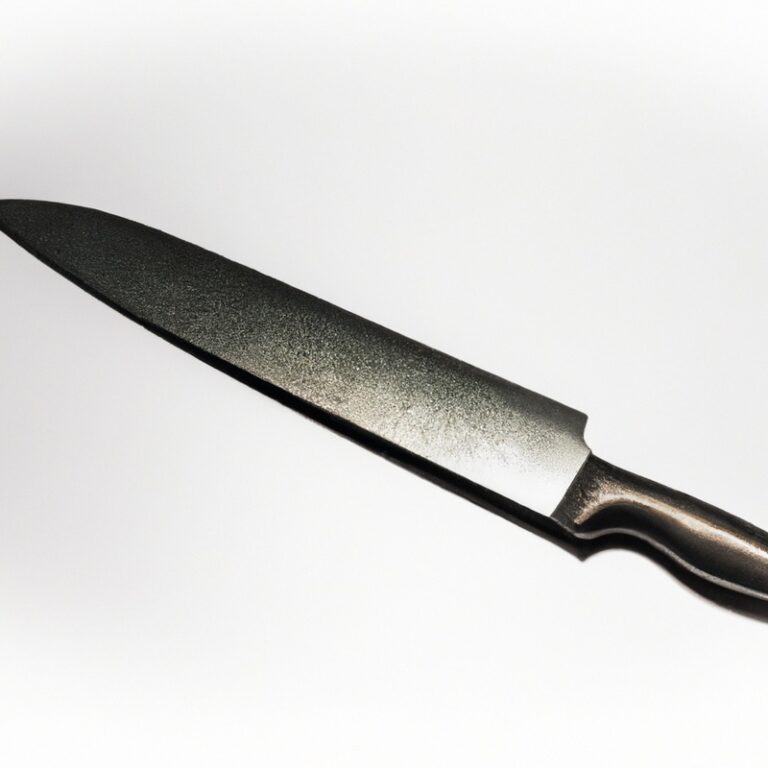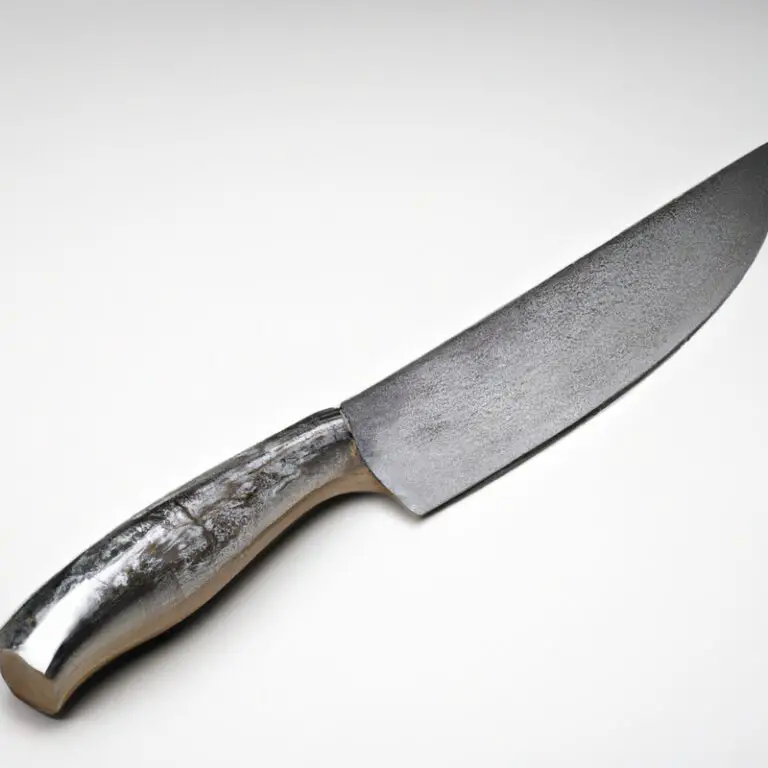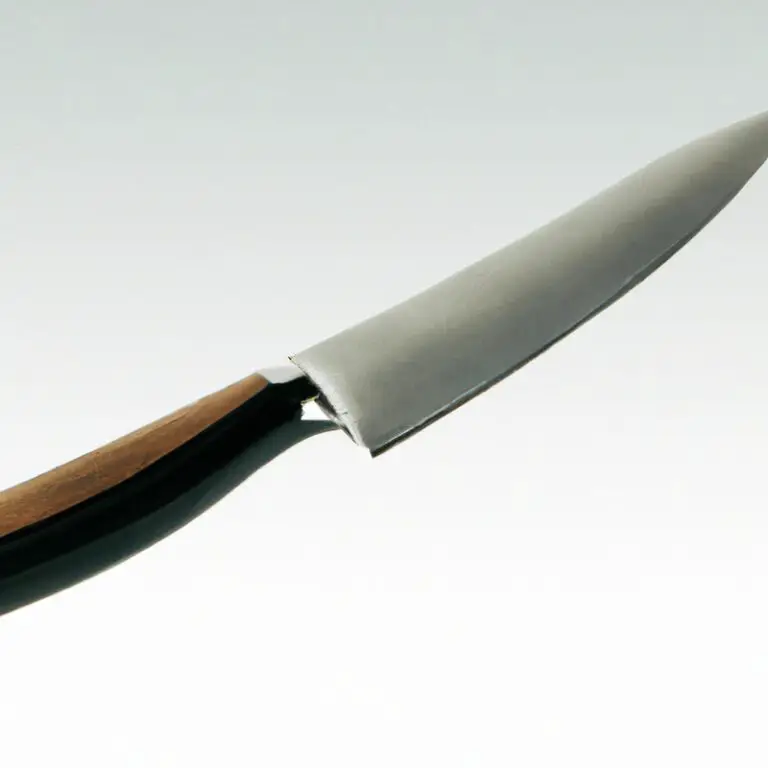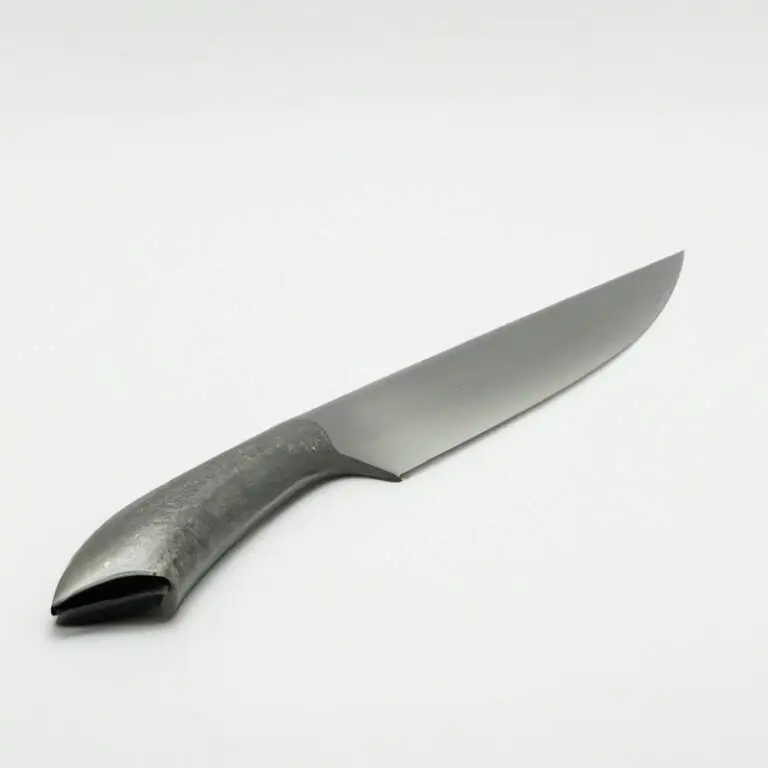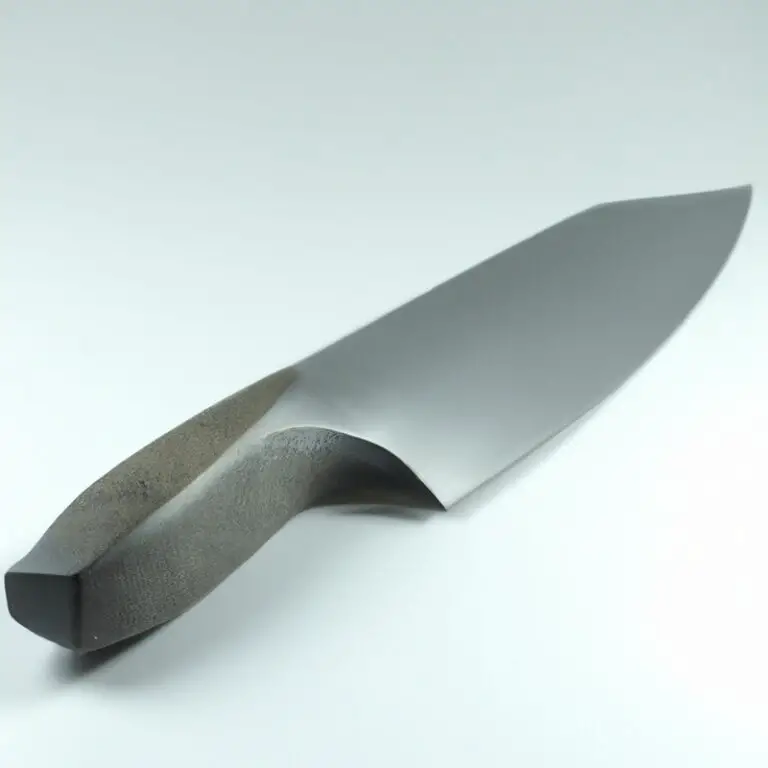What Are The Different Ways To Grip a Gyuto Knife Handle? Revolutionize!
Key Takeaways:
- Understanding different ways to grip your Gyuto knife handle can help improve your cutting precision and reduce fatigue.
- Experimenting with various grip styles can help you find the most comfortable and effective one for your specific needs.
- Factors such as blade length, handle shape, and cutting technique can all impact the way you grip your Gyuto knife.
- Practice and consistency are key to developing a solid grip and mastering the use of your Gyuto knife.
Have you ever struggled with the grip of a Gyuto knife handle while chopping or slicing away? A proper grip can make all the difference in your cutting performance and safety.
In this article, I will be discussing the various ways to grip a Gyuto knife handle.
We will explore the Western and Japanese grip styles, the pinch grip versus the handle grip, and the benefits of a proper grip. Additionally, we will dive into how to choose the right knife handle size for your hand and technique, and how to practice your grip for different cutting tasks.
By the end of this article, you’ll be a master at handling your Gyuto knife like a pro!
| Grip Type | Description | Advantages | Disadvantages |
|---|---|---|---|
| Pinch Grip | Hold the blade just above the handle with your thumb on one side and your index and middle fingers on the other side. | – Provides better control – Reduces hand fatigue – Allows for precision cutting | – Tends to be less comfortable for some people – May not work for larger hands |
| Handle Grip | Wrap your hand around the handle with your thumb resting on one side and your fingers on the other. | – Comfortable for many people – Provides a secure grip – Good for heavier cutting tasks | – May tire the hand more quickly – Less precise than pinch grip |
| Hybrid Grip | Combines elements of both pinch and handle grips, with the thumb and index finger using a pinch grip while the remaining fingers wrap around the handle. | – Provides good control and comfort – Ideal for most cutting tasks | – May require some practice – May not work for everyone |
Western Grip Style: How to Hold a Gyuto Knife Handle in a Better Way?
The Western Grip Style involves holding the handle of the Gyuto knife with your thumb and index finger on the bolster, while the other three fingers grip the handle. To ensure a better grip, position your thumb and index finger higher up on the bolster and let your other fingers wrap around the handle for support.
This grip allows for more control and power, making it a popular choice for heavy-duty tasks such as chopping and slicing.
For better results, keep your wrist straight and close to the blade while cutting. Remember to practice good knife safety measures to avoid accidents.
Pinch Grip vs. Handle Grip: Which is the Preferred Method for Gyuto Knives?
Pinch Grip and Handle Grip are the two most popular methods for holding a Gyuto knife handle. Pinch Grip involves holding the knife’s blade between the index finger and thumb, while Handle Grip involves wrapping the handle with your outer fingers and thumb without touching the blade.
Experts generally recommend using the Pinch Grip for precision cutting tasks, such as slicing vegetables and fruits.
It allows for greater control over the knife, facilitating fine-tuned movements and accuracy. Handle Grip is better suited for heavier-duty cutting tasks that require additional force and strength, such as chopping meat and dense vegetables.
It offers a more secure and comfortable hold on the knife’s handle, but it also increases the risk of accidents and injuries if not used correctly.
Ultimately, the preferred method of grip for a Gyuto knife depends on personal preference, the cutting task at hand, and an individual’s level of experience and comfort with the knife. It is recommended to experiment with both techniques and use the grip that feels most comfortable and secure for the task.
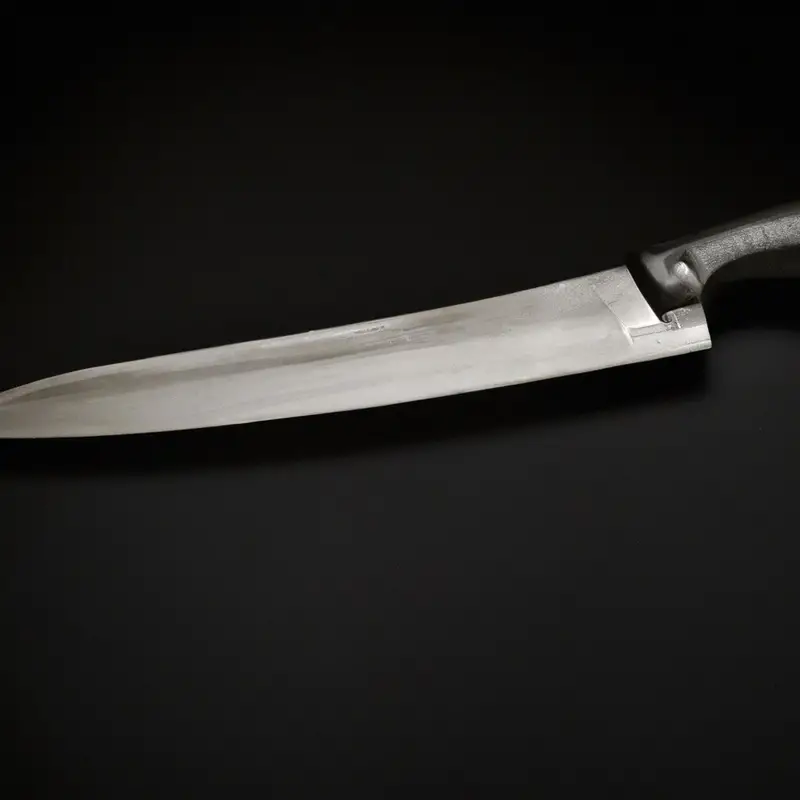
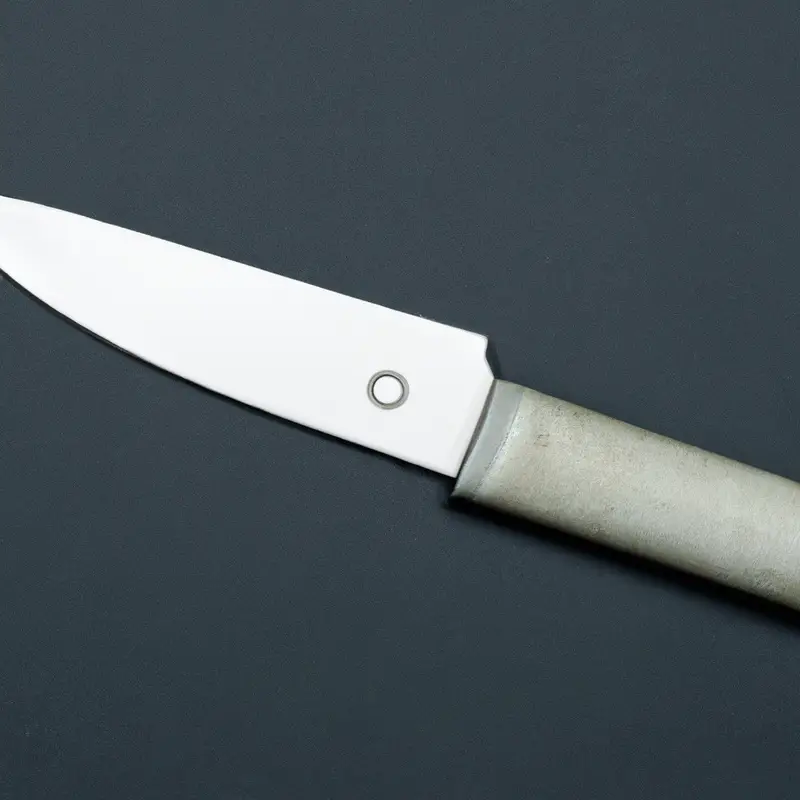
Basic Rules of Grip: Tips and Techniques to improve your Gyuto knife handling
To improve your Gyuto knife handling, here are some basic rules of grip to follow:
- Hold the handle firmly: Grip the handle tightly but without being too tense. This will give you better control over the knife’s movements.
- Use your index finger and thumb: Place your index finger on the spine of the blade and your thumb on the opposite side of the handle. This is known as the pinch grip and allows for better precision when cutting.
- Keep your other fingers curled: Curl your remaining fingers around the handle for stability and balance.
- Maintain the right angle: Keep your wrist at a 90-degree angle to the cutting board to avoid injury and maintain accuracy.
- Practice proper posture: Stand with your feet shoulder-width apart and your body facing the cutting board to maintain balance and stability.
By following these basic rules of grip, you can improve your Gyuto knife handling and achieve more precise and efficient cutting.
Understanding Your Knife Handle: Choosing the Right Size for Your Hand and Technique
Choosing the right size of the Gyuto knife handle is crucial for comfort and safety during cutting tasks. A handle that is too small or too big can cause hand fatigue and discomfort, leading to a decrease in cutting performance.
To pick the right size, consider the length and circumference of your hand and the cutting technique you use.
For example, those with small hands may opt for a smaller handle, while those with larger hands may prefer a larger handle. Additionally, consider the shape and design of the handle to ensure a firm and comfortable grip.
It’s best to hold and test out the knife before purchasing to ensure the right fit.
A properly sized Gyuto knife handle will ultimately improve your cutting performance and make your experience more enjoyable.
Japanese Grip vs. European Grip: Pros and Cons of Holding a Gyuto Knife Handle
The Japanese grip, also known as the pinch grip, involves holding the knife with your index finger and thumb on either side of the blade’s base. This grip allows for maximum control and precision while cutting, especially when making small and intricate cuts.
On the other hand, the European grip involves wrapping your fingers around the handle, including your thumb, which rests on the spine.
This grip offers a more comfortable and sturdy grip on the knife, making it ideal for heavier and longer cutting tasks. In terms of pros and cons, the Japanese grip provides better control and accuracy, which is essential for delicate tasks.
However, this grip may require more hand strength and can cause fatigue over extended periods.
In contrast, the European grip is more comfortable and less strenuous, particularly for those with larger hands. But, it results in less precision and control, which can impair the final result.
Ultimately, the best grip style depends on personal preference, task at hand, and knife size.
Experiment with both grips to find the one that suits your needs and abilities the best.
Benefits of Proper Grip: How to Ensure Safety and Comfort with Your Gyuto Knife
A proper grip on your Gyuto knife can provide a range of benefits, such as enhanced safety and comfort while cutting. Using a secure and firm grip on the handle can minimize the risk of accidents or injuries when vegetable or meat cutting.
The right grip can also help you work faster, with less fatigue, and greater precision.
To achieve a proper grip on your Gyuto knife, ensure that you practice the right method and technique consistent with the tasks at hand. Additionally, choose a knife handle that fits comfortably in your hand and allows you a stable grip when performing your preferred cutting technique.
Overall, mastering a proper grip on your Gyuto knife is critical to improving your knife handling skills and overall cooking experiences.
Finding the Right Balance: How the Gyuto Knife Handle Affects Your Cutting Performance
The balance of a Gyuto knife plays a crucial role in your cutting performance. A well-balanced knife will feel comfortable in your hand, reduce the strain on your wrist, and allow for precise cuts.
The handle of the knife affects its balance, and different handles can provide different benefits.
For example, a lightweight handle can make the knife easier to maneuver, while a heavier handle can provide better balance and control. It’s important to choose a handle that is appropriate for your hand size and grip style, as this will affect how well you can control the knife.
Ultimately, finding the right balance between handle weight and blade weight is key to achieving optimal cutting performance with your Gyuto knife.
Traditional vs. Modern Grips: Which Method is Best for Professional Chefs?
When it comes to traditional vs. modern grips for professional chefs, there is no clear winner.
Traditional grips, such as the Japanese grip, emphasize precision and control.
Modern grips, such as the pinch grip, prioritize speed and efficiency. Ultimately, the best method depends on the individual chef and the task at hand.
Some chefs may prefer to mix and match grip styles depending on the cutting task.
Regardless of grip style, the most important factor is to ensure comfort, safety, and mastery of the knife handle to achieve optimal cutting performance.
How to Practice Your Grip: Drills and Exercises to Master Gyuto Knife Handling
To improve your Gyuto knife handling, practice makes perfect. Here are some simple drills and exercises to master your grip:
- Knuckle push-ups: Start in a push-up position, but rest your weight on your knuckles instead of your palms. This exercise can help you develop the wrist strength necessary for a strong grip.
- Squeezing a tennis ball: This exercise is great for building and maintaining grip strength. Simply squeeze a tennis ball for one minute at a time, repeating several times a day.
- Holding a knife handle while doing wrist curls: Hold your knife handle with your fingers and perform wrist curls using a light weight. Focus on keeping your grip tight and consistent throughout the exercise.
- Cutting practice: Practice cutting various fruits and vegetables with your Gyuto knife, focusing on maintaining a steady grip and keeping your knuckles in line with the blade.
Remember, consistency is key when practicing your grip. Over time, these exercises will help you develop the strength, control, and muscle memory necessary for an expert Gyuto knife grip.
The Importance of Flexibility: How to Adjust Your Grip for Different Cutting Tasks
The flexibility to adjust your grip according to different cutting tasks is vital for effective knife handling. Depending on the type of food and the desired cut, you may need to vary your grip to achieve the desired results.
For example, a pinch grip may be suitable for precision cuts such as mincing, while a handle grip may be more comfortable for heavier chopping tasks.
By being flexible with your grip, you can improve your accuracy, reduce the risk of injury, and enhance your overall cutting performance. It is essential to practice and master various grips, such as the pinch grip, handle grip, and Japanese grip, to be able to adjust your grip effortlessly according to the task at hand.
Moreover, it is important to use the right knife for each task.
A Gyuto knife is versatile, but it may not be suitable for some tasks, such as filleting fish. In such cases, adjust your grip with the right knife to ensure the best results while minimizing the risk of injury.
In summary, flexibility in adjusting your grip is crucial for effective and safe knife handling.
Practice different grips and use the right knife for each task to ensure optimal performance.
Final Verdict
Now that we have explored the various ways to grip a Gyuto knife handle, it is clear that the grip style can significantly impact your cutting performance, safety, and comfort. By choosing the right size and technique for your hand and task, you can enhance your precision, speed, and control in the kitchen.
Whether you prefer the Western grip style or Japanese grip style, the important thing is to practice and maintain a flexible grip that adapts to your needs.
As a respected authority on knives, we hope this guide has provided you with actionable insights and practical takeaways to improve your Gyuto knife handling skills. Remember, a proper grip is not just about aesthetics, it is about empowering you to unleash your creativity and passion for cooking with confidence and expertise.

